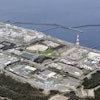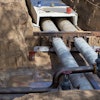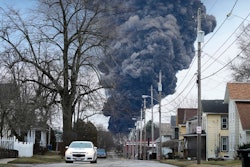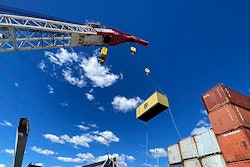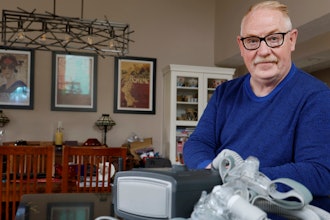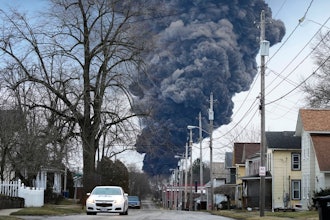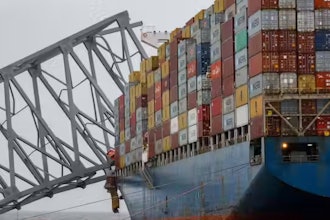Last year was a big year for recalls in the United States. The Food and Drug Administration and U.S. Department of Agriculture issued nearly 600 recalls in 2016, totaling hundreds of millions of products pulled from shelves. As much as we harp on food safety, these recalls still happen — but preparation can be the difference.
When was the last time you viewed your food safety protocols from a high-level perspective? A holistic approach to mitigating these risks could keep your brand from making headlines for the wrong reasons in 2017.
Analyzing Your Product Flow
Food safety encompasses every aspect of your food plant from personnel to equipment to ingredients and processes. Your facility must have the right processes and methods in place to execute food safety practices at every stage.
With so many moving parts, it’s vital to strategically plan your approach, including:
- The ingredients that go into your products
- How your products are made
- Packaging materials
- The distribution process to get it out the door
Food safety isn’t limited to what happens on the processing line — it requires discipline and attention at every stage, including the ingredients that come into your plant. Dozens of brands were hit by recalls in 2016 after distributor Aspen Hills noted potential listeria contamination in cookie dough it shipped to companies like Blue Bunny, Blue Bell, Cedar Crest and Publix.
Follow the flow of your product, from raw materials to packaged products, and analyze the weaknesses — or areas of opportunity — within each operational step.
Start by focusing on five key areas for assessing food safety risks:
- Separation of allergens
- Food-safe surface materials
- Air pressure and flow
- Plant personnel
- Packaging
Separation of Allergens
Are you catering to the growing number of consumers who purchase allergen-friendly products? Gluten-free items and other such products are overwhelming today’s marketplace, and food processors are adjusting their product lines to adapt to these niche customers.
However, one of the leading causes of food recalls is the presence of undeclared allergens in a product. Avoiding cross-contamination is critical if you’re producing in this space, but your efforts must begin before any product hits your processing line.
Analyze the start of your supply chain — before raw ingredients arrive at your facility. You should be engaging suppliers certified by a third-party allergen expert to ensure your ingredients don’t contain trace amounts of allergens. It doesn’t take much to trigger a recall.
Once the ingredients arrive at your facility, verify allergen-free ingredients are stored separately and securely. Even dust particles can contaminate these products.
Finally, if you’re not using a dedicated allergen line, analyze if your product schedule is optimized for safety and efficiency. Plan non-allergenic product production first, followed by allergen-present products. A scheduling matrix can help minimize clean-in-place (CIP) and changeover time between batches.
Food-Safe Surface and Materials
Stainless steel and solid aluminum are the best materials for food safety. They’re conducive to easy cleaning and sanitation, making them ideal for surfaces that come in contact with your products. If these materials are already present in your facility, make sure they’re maintained properly. If slopes aren’t properly installed, water can collect and pond in some areas, creating a breeding ground for bacteria.
Air Pressure and Flow
The balance and directional flow of air can sometimes be overlooked, but it is a crucial element to food safety in your plant. Significant air pressure differences can lead to unwanted moisture and condensation in equipment crevices and on ledges — a prime opportunity for bacterial growth.
Analyze the flow of air in your plant, as well. Depending on your storage and processing areas, improper airflow can carry airborne dust particles and contaminants into areas of the plant where they don’t belong.
This doesn’t just apply to allergens, either — meat-processing facilities especially have the potential for dangerous airborne contaminants such as E. coli. For example, the air from kill floors and rendering areas, where raw poultry and meat are handled, must never flow to areas such as packaging, where airborne bacteria could infect the final product.
Airborne-related risk factors can often go unseen by plant personnel, so consider consulting a third-party expert who specializes in food safety design to analyze your current configuration.
Plant Personnel
Human error could be the catalyst to a large-scale recall, which is why a culture of consistent, thorough sanitation practices should be at the heart of your plant personnel’s daily routine.
Ask questions like:
- Do you employ stringent uniform and locker room standards to minimize airborne contaminants from outside the plant?
- What type of garments do you offer employees?
- Are employees required to change gloves and/or aprons as needed?
- Do employees follow strict schedules to sanitize equipment regularly?
Employees should only have access to their specific work center during operation hours to prevent cross-contamination. For example, an employee working with raw ingredients should not be able to access the ready-to-eat (RTE) processing area.
Cover your bases by training employees to perform multiple sanitation procedures so best practices transfer from one department to another.
Packaging
The packaging process is an important step that comes with its own food safety considerations. Just because your current method seems the most efficient, doesn’t necessarily mean it’s the safest. For example, if your plant produces a meat product, consider secondary packaging. Not only is this method efficient, it improves product integrity because it keeps it as cool as possible for as long as possible.
Your packaging process may not require new equipment or a new method, but perhaps you can cut down on how long your product is out in the open after processing. Assess the layout of your plant and the path your product takes as it travels from processing to packaging. Time saved in this step not only benefits output, but it reduces food safety risks.
Each of these areas are part of the big picture of your product flow. Continually remind yourself and your staff that food safety is non-negotiable. Make it a priority to not just comply with food safety standards, but to exceed them in 2017.
About Stellar
Stellar is a fully integrated firm focused on planning, design, pre-construction, construction, refrigeration, mechanical & utility, building envelope, and total operations & maintenance services worldwide. Visit the company's blog at www.stellarfoodforthought.net or learn about its projects at stellar.net.

